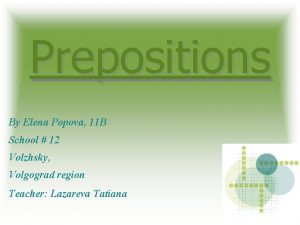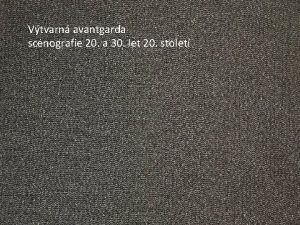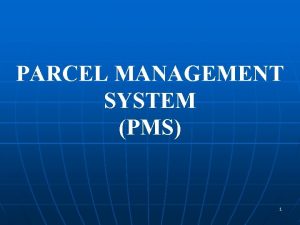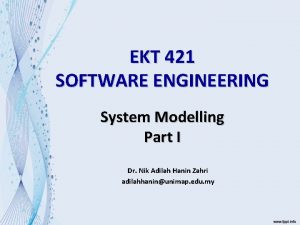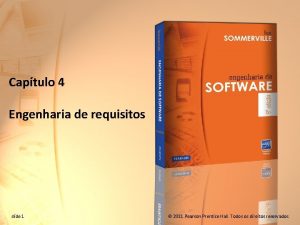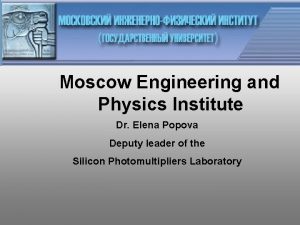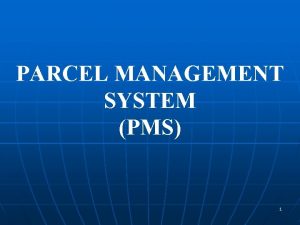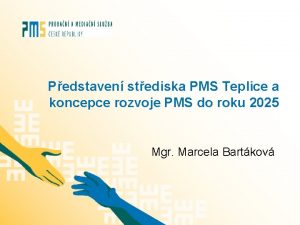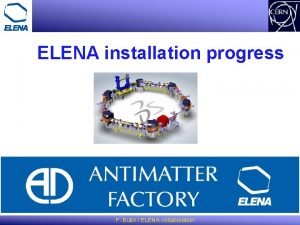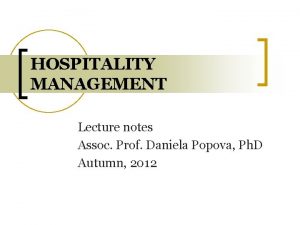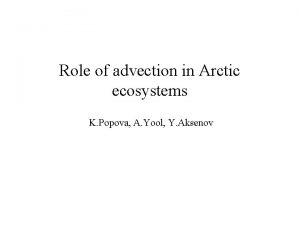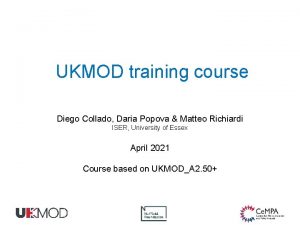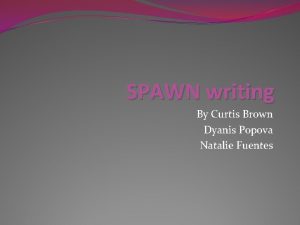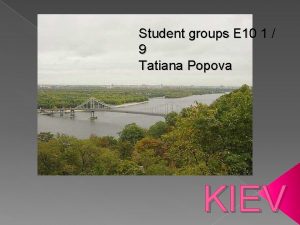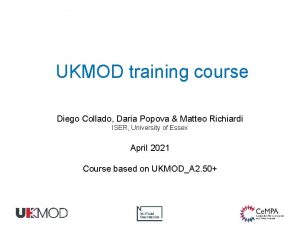Physics of Si PMs Dr Elena Popova National

























- Slides: 25

Physics of Si. PMs Dr. Elena Popova National Research Nuclear University «MEPh. I» (elenap 73@mail. ru) ICASIPM– the International Conference on the Advancement of Silicon Photomultipliers June 11 2018, Schwetzingen, Germany

ICASIPM – the first International Conference on the Advancement of Silicon Photomultipliers (Si. PM) The one of the most important goals of the conference is standartization of Si. PM characterization and we have a lot of topical sessions devoted to the different Si. PM parameters. However the first task of the conference has to be a development of a definition what is the Si. PM (analog Si. PM) ? Si. PM is a novel type of photon number resolving limited Geiger-mode solid state photodetectors It means that we have to develop special kind of standards for Si. PM characterization (maybe not existing now) According to the Russian classification system – Si. PM is a IC (microcircuit, integrated circuit) In principle it is the same as for Digital Si. PM Elena Popova, MEPh. I ICASIPM, June 11 2018 2

Elena Popova, MEPh. I ICASIPM, June 11 2018 3

At present all known to me Si. PMs are based on jointed together p-n-junctions which operate in limited (self-quenching) Geiger mode • P-n-junction is a Si. PM’s cell. • If p-n-junction is located stand-alone, outside of the Si. PM (e. g. as a test structure) – It can be considered as a SPAD (Single Photon Avalanche Detector) 2 Si. PM cells SPAD • One important note – Si. PM cell is equal to SPAD if SPAD has local (situated in a close vicinity with p-njunction, not as an external circuit elements) passive/active quenching. • Many SPADs jointed together and having common readout is a Si. PM Elena Popova, MEPh. I SPAD – passive and active circuit – CMOS technology Si. PM cell – passive circuit – custom technology ICASIPM, June 11 2018 4

Silicon Photomultiplier (Si. PM) or Solid State Photomultiplier (SSPM) pixel h Scope signal Amplitude (charge) spectrum 0 pe 1 pe 2 pe R 50 3 pe substrate U 60 V 4 pe Common features of Si. PMs (SSPMs) • Multi-cell device with common readout • Each cell – p-n-junction in self-quenching Geiger mode • All cells are equal • cells are independent from each other • Signal – is analog sum of all fired cells cell signal – well defined even if it hardly visible due to low gain ( 0 or 1) Si. PM is an analog device Elena Popova, MEPh. I ICASIPM, June 11 2018 5

A Brief History of Si. PMs and Si. PM Physics have been presented already in the nice talk of Zair Sadygov Here is a little bit additional History of Si. PM Physics At the beginning, pre-Si. PM devices operated without p-n-junction(s)… Elena Popova, MEPh. I ICASIPM, June 11 2018 6

Mid -1970 s USSR Lebedev Physical Institute Academy of Science, Moscow MIS (metal-insulator-silicon) structures differ from the traditional avalanche structures by the presence of a wideband, high-resistance buffer layer preventing output of the charge carriers from multiplication layer. +U Me Si. O 2 p-Si …In the mid-1970 s, a concept was developed regarding an Avalanche process with the Negative Feedback (ANF) appearing because of the accumulation of the charge carriers produced by the avalanche at the multiplication region boundary… [Kravchenko, A. B. ; Plotnikov, A. F. ; Shubin, V. E. Feasibility of construction of a pulsed avalanche photodetector based on MIS structure with stable internal amplification. J. Quantum Electron. 1978, 8, 1086, 1399] But developed theory was based on classical avalanche process approach (no single carriers but currents densities instead, no probabilistic theory) -> No single photon sensitivity Avalanche Photodetectors. Vitaly E. Shubin, Dmitry A. Shushakov Encyclopedia of Optical Engineering DOI: 10. 1081/E-EOE 120009727 Elena Popova, MEPh. I ICASIPM, June 11 2018 7

1988 USSR Moscow electric lamp factory (MELZ) V. Golovin, N. Yusipov Institute Nuclear Research (INR) Z. Sadygov, A. Gasanov, et al. ) Publication on the plane MRS APD: A. Gasanov, V. Golovin, Z. Sadygov, N. Yusipov. –Technical Physics Letters (in Russian), v. 14, No. 8, p. 706, (1988). The same classical avalanche process approach (definetly connections between Lebedev group and authors) , But more stable and promising operation of the MRS structures Novel Micro-pixel Avalanche Photo Diodes and their Possible Application in Cosmic Ray/Astrophysical Researches Zheleznykh, I. M. ; Sadygov, Z. Ya. ; Khrenov, B. A. ; Tkatchev, L. G. ; Zerrouk, F. Publication: Proceedings of the 30 th International Cosmic Ray Conference. July 3 - 11, 2007, Mérida, Yucatán, Mexico Elena Popova, MEPh. I ICASIPM, June 11 2018 8

1988 USSR Dark IV curves Photocurrent multiplication vs light pulse intensity Points – experiment, solid lines -simulation Publication on the plane MRS APD: A. Gasanov, V. Golovin, Z. Sadygov, N. Yusipov. –Technical Physics Letters (in Russian), v. 14, No. 8, p. 706, (1988). Understandable theory of MRS structure operation didn’t exist yet Elena Popova, MEPh. I ICASIPM, June 11 2018 9

The first micro-pixel avalanche photodiode was born. P-n junction are here now! 1989 USSR A. Gasanov, V. Golovin, Z. Sadygov and N. Yusipov. Russian patent #1702831. Priority time: 11. 09. 1989 The first publication about MRS structure with n+ cells: A. Gasanov, V. Golovin, Z. Sadygov, N. Yusipov. –Technical Physics Letters (in Russian), v. 16, No. 1, p. 14, (1990) MRS structure with n+ cells Reference MRS structure without n+ cells Understandable theory of MRS structure operation didn’t exist yet Elena Popova, MEPh. I ICASIPM, June 11 2018 10

New solid state photomultiplier, 1995 Russia D. Shushakov, V. Shubin, Lebedev Institute Academy of Science Proc. SPIE 2397, Optoelectronic Integrated Circuit Materials, Physics, and Devices, (24 April 1995); doi: 10. 1117/12. 206900; https: //doi. org/10. 1117/12. 206900 Plane Si. C-Si ANF heterostructure (MRS without n+ cells) New theory was born - new physics of a Single-Carrier-initiated Avalanche Negative Feedback process (SC ANF process) …The main difference between such a structure and a conventional avalanche photodiode (APD) is nonstationarity of the electrical field strength in an avalanche region caused by the local area (10 m 2) feedback… …It is shown that when the non-stationarity is manifested at amplification of a single photocarrier, it changes radically the main characteristics of the avalanche process… • No any more current densities (conventional avalanche process) – single carrier Monte-Carlo simulation • Operational Voltage is above breakdown – overvoltage – limited Geiger discharge due to the local feedback Elena Popova, MEPh. I ICASIPM, June 11 2018 11

New solid state photomultiplier, 1995 Russia D. Shushakov, V. Shubin, Lebedev Institute Academy of Science Proc. SPIE 2397, Optoelectronic Integrated Circuit Materials, Physics, and Devices, (24 April 1995); doi: 10. 1117/12. 206900; https: //doi. org/10. 1117/12. 206900 Experimental waveform With Charge sensitive preamp The gain G of SC ANF process depends on the overvoltage value and the local negative feedback coefficient (C) G = C*ΔU/e, where C - the capacity of insulator layer, ΔU=U-Ubr Simulated Gain distribution for single injected carrier U 1>U 2 Experimental distribution of gain G 1 phe Pedestal Elena Popova, MEPh. I ICASIPM, June 11 2018 12

New solid state photomultiplier, 1995 Russia D. Shushakov, V. Shubin, Lebedev Institute Academy of Science Proc. SPIE 2397, Optoelectronic Integrated Circuit Materials, Physics, and Devices, (24 April 1995); doi: 10. 1117/12. 206900; https: //doi. org/10. 1117/12. 206900 Calculated probability Pr that a single electron will give a detectable pulse when the average Gain is G and discriminator is set at 1000 electrons Attempt to calculate Photon Detection Efficiency (PDE) of a single initial carrier When several photons are falling on to the structure simultaneously (but not at the same place), they are amplified independently due to the negative feedback locality, and produce a summarized output signal Elena Popova, MEPh. I ICASIPM, June 11 2018 13

New solid state photomultiplier, 1995 Russia D. Shushakov, V. Shubin, Lebedev Institute Academy of Science Proc. SPIE 2397, Optoelectronic Integrated Circuit Materials, Physics, and Devices, (24 April 1995); doi: 10. 1117/12. 206900; https: //doi. org/10. 1117/12. 206900 Summary A concept of a novel solid state photosensor with an internal amplification based on the avalanche process with the negative feedback was considered Single initial carrier – potential above breakdown – strong impact ionization – very fast local charge accumulation – discharge filament switched off Solid state analog of a vacuum-tube photomultiplier – • high gain, • low noise But higher quantum efficiency! • small response time. • The avalanche devices based on different kinds of semiconductor materials may be designed. • This would allow one to manufacture avalanche photosensors for different urgent spectral ranges. Amplification Technology , USA (DAPD) http: //www. amplificationtechnologies. com/index. html Elena Popova, MEPh. I ICASIPM, June 11 2018 14

1997 Russia New results on MRS APDs ITEP team A. V. Akindinov, A. N. Martemianov, P. A. Polozov, V. M. Golovin, E. A. Grigoriev, Nucl. Instr. and Meth. A 387 (1997) 231 In 1997 year the a single photoelectron resolution with this MRS APD with n+ dots produced by MELZ (V. Golovin) was firstly observed. This confirms the suggestion [*] that this device works in limited Geiger mode. * E. Grigoriev, F. Lemeilleur and G. Stefanini, communications at special seminars at CERN (ECP), INFN (Piss), CPPM (Marseille) and CNRS (Strasbourg), March-April 1993, unpublished. Intrinsic gain (amplification coefficient for a single primary charge) can be determined from the interval between two adjacent peaks. ? ? ? Light detection efficiency depends in a complicated way on both the wavelength and reverse bias voltage. Elena Popova, MEPh. I ICASIPM, June 11 2018 15

Limited Geiger-mode silicon photodiode with very high gain. MEPHI team G. Bondarenko B. Dolgoshein V. Golovin A. Ilyin R. Klanner E. Popova Nucl. Phys. B – Proc. Suppl. , V. 61, Issue 3, February 1998, 347 -352 1998 Russia Photodiode signal distributions for low intensity light pulses MRS APD with n+ dots produced by MELZ (V. Golovin) PDE(670 nm)≈1% calculated on the basis of <N>=-ln. P(0), the average number of cells fired <N> is calculated using the Poisson distribution formula, where P(0) is the probability to have no fired cells Tuesday, June 12, 2018 Photon Detection Efficiency - Nepomuk Otte Finite number of cells: Thursday, June 14, 2018 Nonlinearity and Saturation - Sergey Vinogradov Elena Popova, MEPh. I ICASIPM, June 11 2018 16

Limited Geiger-mode microcell silicon photodiode: new results. 2000 Russia MEPHI team G. Bondarenko, P. Buzhan, B. Dolgoshein, V. Golovin, E. Guschin, A. Ilyin, V. Kaplin, A. Karakash, R. Klanner, V. Pokachalov, E. Popova, K. Smirnov. Nucl. Instr. Meth. Phys. Res. A 442 (2000), pp. 187 -192. New samples of MRS APD with n+ dots produced by MELZ (V. Golovin) PDE (570 nm)≈8% …Unfortunately the simple way to increase PDE just increasing the n+-pins density does not help, because the higher n+-pins density leads to strong coupling between neighbour pixels, deteriorates the pixels independency and limited Geiger-mode performance… Crosstalk was recognized as an important problem! First attempt of the crosstalk suppression Wednesday, June 13, 2018 Nuisance Parameters - Alberto Gola Technology which allows to obtain high PDE and low crosstalk has to be developed V. Golovin – CPTA (Russia) - Photonique SA (Swiss) Elena Popova, MEPh. I ICASIPM, June 11 2018 17

The advanced study of silicon photomultiplier 2000 Russia MEPHI/PULSAR team P. Buzhan, B. Dolgoshein, A. Ilyin, V. Kantserov, V. Kaplin, A. Karakash, A. Pleshko, E. Popova, S. Smirnov, Yu. Volkov, L. Filatov, S. Klemin, and F. Kayumov (2002) Advanced Technology and Particle Physics: pp. 717 -728. Samples produced by MEPh. I/PULSAR team Silicon Photomultiplier (Si. PM)– the name given by prof. Boris Dolgoshein PDE (550 -660 nm)≈15% Elena Popova, MEPh. I ICASIPM, June 11 2018 18

Multiphoton Timing with Si. PM Laser (660 nm) signal width =700 ps 700 Laser (670 nm) signal width =40 ps 90 ps Advanced Technology and Particle Physics: pp. 717 -728. NIM A 442 (2000), pp. 187 -192 For discussions of Si. PM timing properties Wednesday, June 13, 2018 Timing Properties (FAST Action WG 3 meeting) - Stefan Gundacker Elena Popova, MEPh. I ICASIPM, June 11 2018 19

The end of pre-Si. PM Physics history Modern history of Si. PM: from 2000 until the time being Modern questions are subjects of the our conference! Elena Popova, MEPh. I ICASIPM, June 11 2018 20

Amplitude (exp) 1 2 3 Charge (exp) Elena Popova, MEPh. I ICASIPM, June 11 2018 21

Signals from stand alone cell LGP signal distributions for low intensity light pulses Fixed overvoltage U=1. 65 V, different light intensity Amplitude (exp) 1 2 3 If we are working with amplitude (not with charge) we can distinguish number of initial phes even inside of single Si. PM cell! Elena Popova, MEPh. I ICASIPM, June 11 2018 22

Signals from stand alone cell Fixed overvoltage U=1. 65 V, different light intensity Plane Si. C-Si ANF heterostructure (without n+ cells) Low intensity light pulse Waveform with charge sensitive preamp Amplitude (exp) 1 2 3 Future trend? No dead area – the highest PDE But gain has to be very low (crosstalk supression) – embedded on the same chip amplifiers are required Elena Popova, MEPh. I ICASIPM, June 11 2018 23

Modern trend: analog Si. PM inside of Digital one Elena Popova, MEPh. I ICASIPM, June 11 2018 24

ICASIPM – first international Si. PM conference devoted to the Si. PM standartization Si. PM definition? ? ? Si. PM is a novel type of photon number resolving limited Geiger-mode solid state photodetector Multi-cell device with common readout in such a way that output signal is an analog sum of all fired cells Each cell – operates with local Negative Feedback provided limited Geiger mode regime All cells are equal Cells are independent from each other Elena Popova, MEPh. I ICASIPM, June 11 2018 25
 Put the verbs in the correct form elena
Put the verbs in the correct form elena Elena popova school
Elena popova school My name is sveta popova i'm 17
My name is sveta popova i'm 17 Ljuba popova
Ljuba popova Mhc-pms use case diagram
Mhc-pms use case diagram Distributed energy storage
Distributed energy storage Pms flexisched
Pms flexisched Commercial framework
Commercial framework What is pms scheme
What is pms scheme Physical mobility scale out of 45
Physical mobility scale out of 45 Parcel management software
Parcel management software Amos pms
Amos pms Mhc-pms meaning
Mhc-pms meaning Ock
Ock Premenstrual syndrome discharge
Premenstrual syndrome discharge Asterisk pms integration
Asterisk pms integration Harlan.flexisched
Harlan.flexisched Mhc-pms meaning
Mhc-pms meaning Mhc-pms in software engineering
Mhc-pms in software engineering Pms complex mk
Pms complex mk Sfcgc
Sfcgc Local government protocols
Local government protocols Mhc-pms
Mhc-pms Pms planned maintenance system
Pms planned maintenance system Pms 7003 datasheet
Pms 7003 datasheet Mhc pms
Mhc pms
